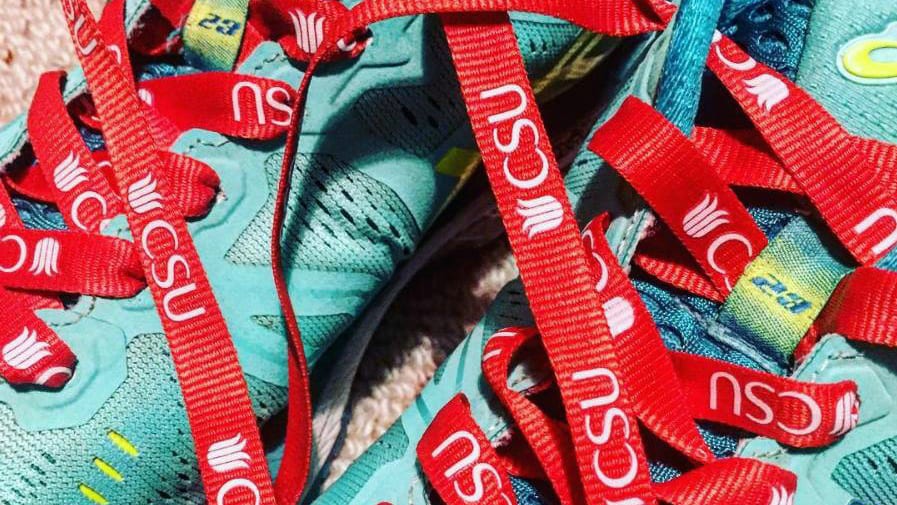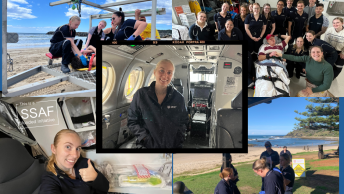This post is over three years old, the information may be outdated.
Tracking progress over time can help keep you motivated and according to Dr Cheyne Donges from the School of Exercise Science, Sport and Health the best way to do it is to start with a baseline measurement.
Your progress over time is a very individual thing and it’s important not to compare yourself to others but rather track how you’re going in comparison to your own starting point. Be mindful that there are lots of different types of activities happening on the #BetterInRed challenge and everyone is starting out from a different level of fitness, so there’s no one size fits all to track progression. But the one thing that you have to have if you want to measure progress is a baseline – a starting measurement that is objective enough to give you a number that’s your comparison for all future progress.
One way to get a baseline figure for your fitness is to do a one mile walk test – measuring how long it takes you to walk as briskly as possible 1.6 kilometres (after a brief warm-up) and what your heart rate is when you finish. If you don’t have a heart rate monitor you could set the timer on your phone to one minute and then measure your pulse to get the beats per minute. The one mile walk test is known as the Rockport Test and you can use the online calculator to get an estimate of VO2 Max.
But what the heck is VO2 Max?
Well, it’s the standard clinical measure for cardio-respiratory fitness. Measuring it directly involves expensive equipment and a laboratory so unless you’re an elite athlete – or you’ve been lucky enough to be a CSU research subject – you’re unlikely to have had the test. However, results from field tests, such as the Beep Test and the Rockport Test, can be used to create a reliable estimate for VO2 Max.
During exercise, when you breathe more it’s all about your body trying to get more oxygen to the muscles. VO2 Max measures the difference between the oxygen you breathe in and the oxygen that is breathed back out (ie the oxygen that makes it into your bloodstream but is not used by your muscles). The fitter you are the more oxygen you’ll use, so less gets exhaled. And this gives you a higher VO2 Max number. An average VO2 Max score for an adult is 35.
Technology
Let’s talk about technology! Firstly if you’re walking, riding or running there’s lots of apps to help you measure how far you’ve travelled and at what pace, so you can watch yourself improve your average speed over time. Some examples are: Map My Ride / Run / Walk, Strava and Runkeeper.
Then there’s lots of wearable fitness trackers (Fitbit, Jawbone, Garmin and Apple Watch) that are helpful (but not essential) to tracking your activity. They work by either counting steps or measuring your pace, heart rate and more.
At the gym any machine you’re working out on will have the function to measure how you’re going and you can compare that to a baseline from when you first started training in order to track your progress. On the treadmill, it’s your speed and how long you can maintain it, on the exercise bike it’s the level you choose, and on the rowing machine it’s the distance covered in a set time.
If you’re a walker or a runner, you could also grab a friend and participate together in a timed event, such as your local parkrun, to get a baseline. You’ll get a finishing time result so you’ll know how long it took you to complete the five kilometre course. And then at the end of the challenge you could join lots of us on the #BetterInRed challenge for parkrun on Saturday 29 April in all of the campus cities and see if you’ve gotten any faster or whether you feel better while covering the same distance.
A word about weight loss
You might want to measure your progress towards fitness this way but proceed with caution. The scientific jury is still out on whether exercise has an impact on weight loss. It’s believed that nutrition and diet changes are what’s largely responsible for weight changes, so your scales probably aren’t the best measure of fitness progression.
There are also many subjective ways to gauge your own progress over time – mostly to do with the way you feel. Exercise may contribute to you feeling like you’re sleeping better, like you have more energy or that it’s easier to concentrate, all of which can indicate progress. So while they’re not as measurable as how long it takes you to walk 1.6 kilometres, don’t discount them when you’re giving yourself a pat on the back.
—
#BetterInRed is all about getting the most out of university life by looking after your health and wellbeing. It is an exercise challenge that will run for eight weeks from Monday 6 March.
So, lace up, get out and challenge yourself to complete 30 minutes of exercise three times per week. Share your exercise using #BetterInRed and you could win some great prizes!
Find out more at social.csu










